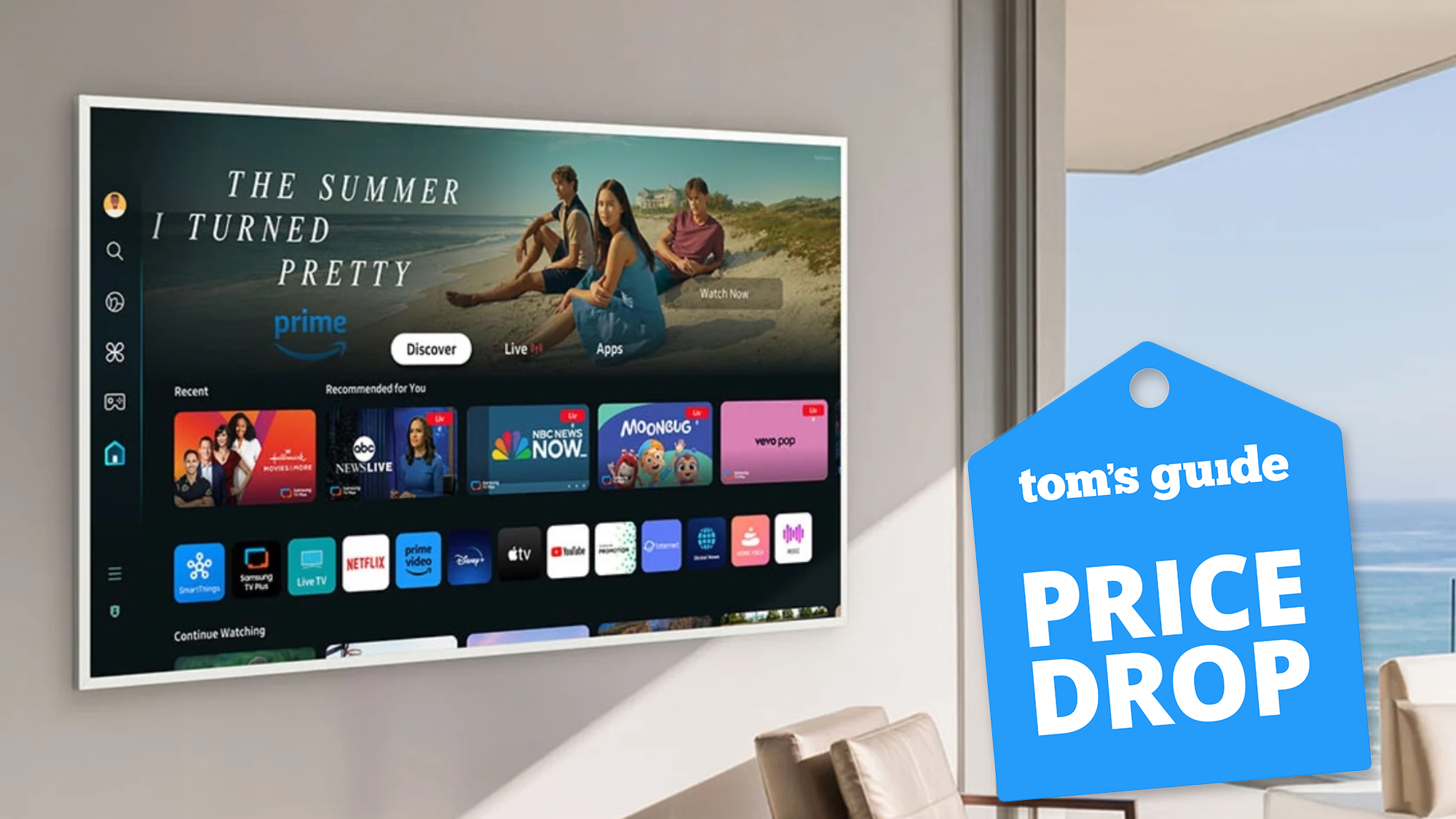Oppo Find N vs. Samsung Galaxy Z Fold 3: Which foldable wins?
In an Oppo Find N vs. Samsung Galaxy Z Fold 3 battle, which foldable comes out on top?
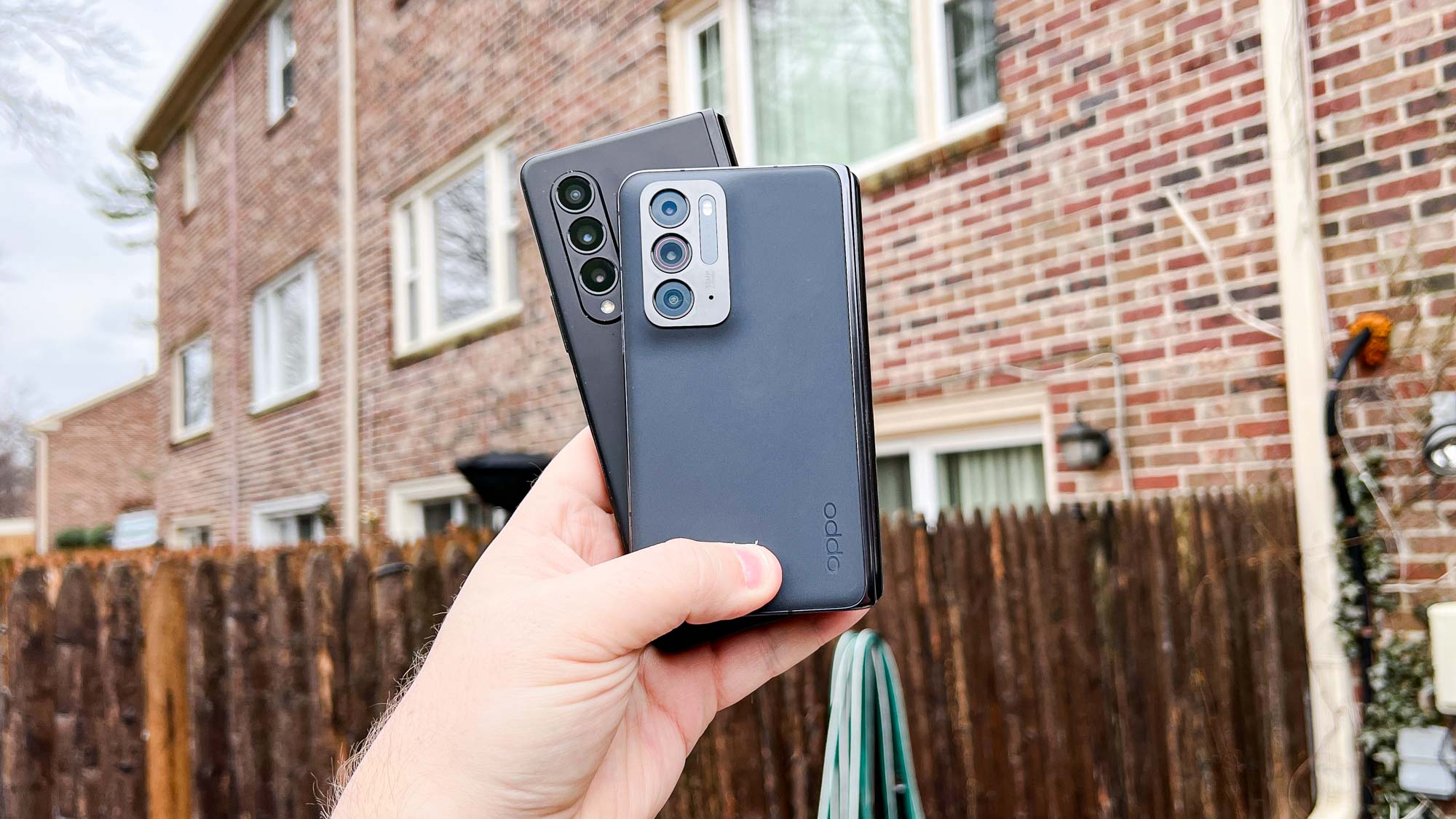
The Oppo Find N may be limited to China, but the impact of this foldable phone could still reach around the world. Samsung, in particular, might be paying attention to how this new device measures up to its own foldables. Our Oppo Find N vs. Samsung Galaxy Z Fold 3 face-off breaks down just how these two foldable phones compare and whether Samsung could learn a thing or two from Oppo.
The Oppo Find N is a stellar device and a marvel of foldable phone engineering. It lacks a gap at the hinge when the phone is folded and you can’t feel the crease between the two displays when the device is open. Samsung’s Galaxy Z Fold 3 can’t claim either of these.
Still, there’s a reason why the Galaxy Z Fold 3 sits at the top of our best foldable phones rankings. While the Fnd N’s China-only availability limits some of our ability to compare the two phones, here’s a closer look at where Samsung’s foldable still excels and where phones like the Find N could provide a challenge.
Oppo Find N vs. Samsung Galaxy Z Fold 3: Specs
| Row 0 - Cell 0 | Find N | Galaxy Z Fold 3 |
| Display size (internal) | 7.1-inch AMOLED (1920 x 1792); 120Hz | 7.6-inch Dynamic AMOLED (2208 x 1768); 120Hz |
| Display size (external) | 5.9-inch AMOLED (1972 x 988); 60Hz | 6.2-inch Dynamic AMOLED (2268 x 832); 120Hz |
| CPU | Snapdragon 888 | Snapdragon 888 |
| RAM | 8GB, 12GB | 12GB |
| Storage | 256GB, 512GB | 256GB, 512GB |
| Rear cameras | 50MP (f/1.8) main, 16MP (f/2.2) ultrawide, 13MP (f/2.4) telephoto w/ 2x optical | 12MP (f/1.8) main, 12MP (f/2.2) ultrawide, 12MP (f/2.4) telephoto w/ 2x optical |
| Front cameras | 32MP (f/2.4) cover, 32MP (f/2.4) internal | 10MP (f/2.2) cover, 4MP (f/1.8) under-display |
| Water resistance | N/A | IPX8 |
| Battery size | 4,500 mAh | 4,400 mAh |
| Battery life (Hrs:Mins) | N/A | 6:35 (120Hz), 7:52 (60Hz) |
| Size (unfolded) | 5.2 x 5.5 x 0.3 inches | 6.2 x 5 x 0.25 inches |
| Size (folded) | 5.2 x 2.9 x 0.63 inches | 6.2 x 2.6 x 0.56 to 0.62 inches |
| Weight | 9.7 ounces | 9.55 ounces |
Oppo Find N vs. Samsung Galaxy Z Fold 3: Price and availability
As we said at the outset, you can’t buy the Find N outside of China. That gives the globally available Galaxy Z Fold 3 a major advantage. You can buy Samsung’s foldable starting at $1,799 for the base 256GB model and $1,899 for the 512GB version.
The Find N starts at 12,999 yuan and goes up to 13,999 yuan for the 12GB/512GB model. At time of writing, that’s about $2,048 and $2206, respectively. Foldables of this caliber don’t come cheap.
Oppo Find N vs. Samsung Galaxy Z Fold 3: Design
The Find N and Galaxy Z Fold 3 are both described as book foldables, in that they fold along a vertical axis. This is opposed to clamshell foldables like the Galaxy Z Flip 3, which fold along a horizontal axis like the flip phones of old. Both types have displays on the covers. In the case of book foldables, this allows them to act like a traditional smartphone.
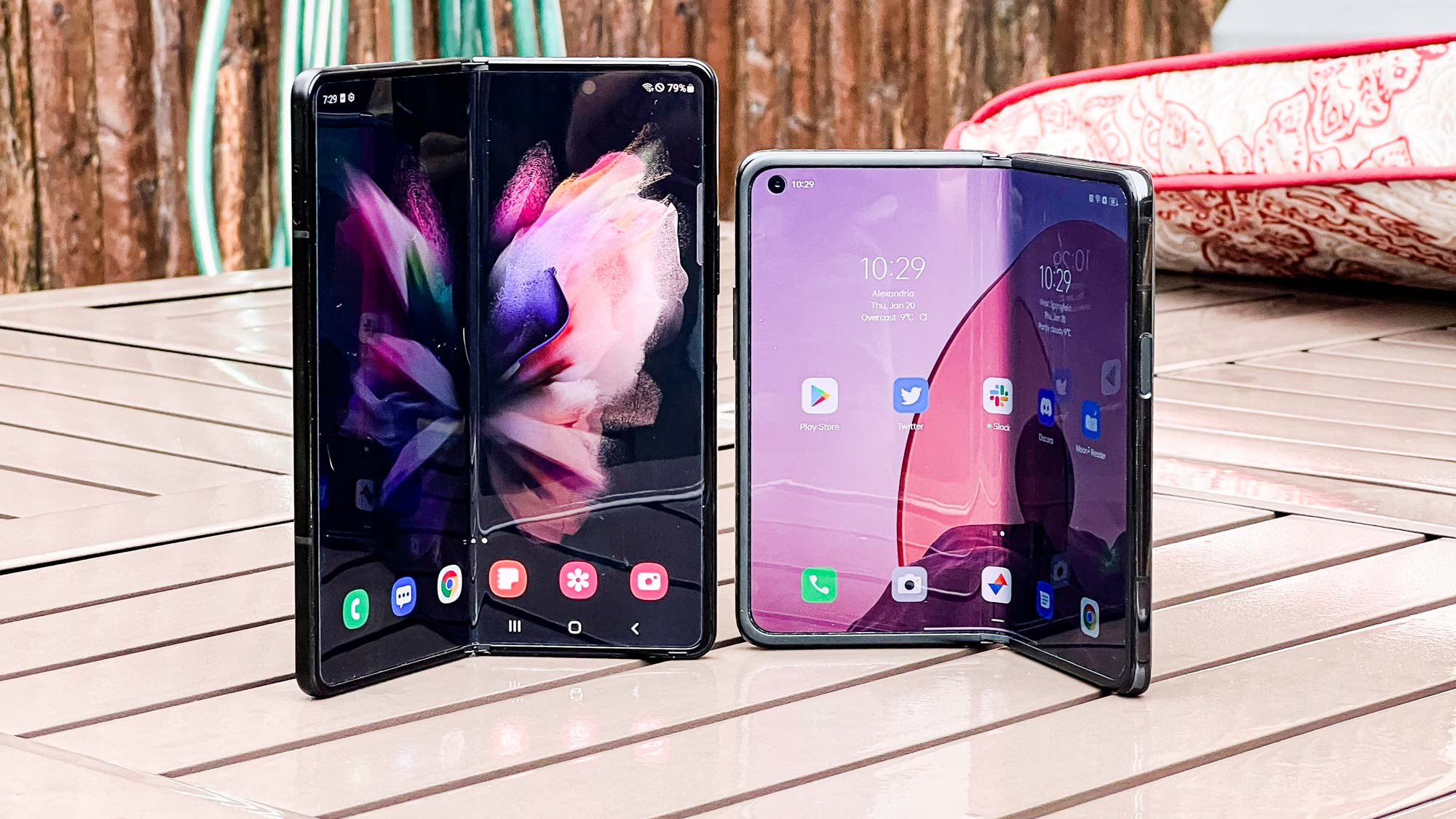
Even though the Find N and Galaxy Z Fold 3 are book foldables, they look remarkably different. The Fold 3 has a very narrow cover display, making for an odd-looking phone mode. The Find N is a bit more square, with a more normal-sized phone mode. Oppo’s phone feels less awkward to use when folded compared to the Fold 3.
A major difference between the two devices comes down to their respective hinges. Samsung may have pioneered the foldable phone, but Oppo has certainly surpassed the Korean company here. The Find N has a seamless design. It lacks a gap between the two displays in phone mode, and there’s no tangible crease between the screens when in tablet mode.
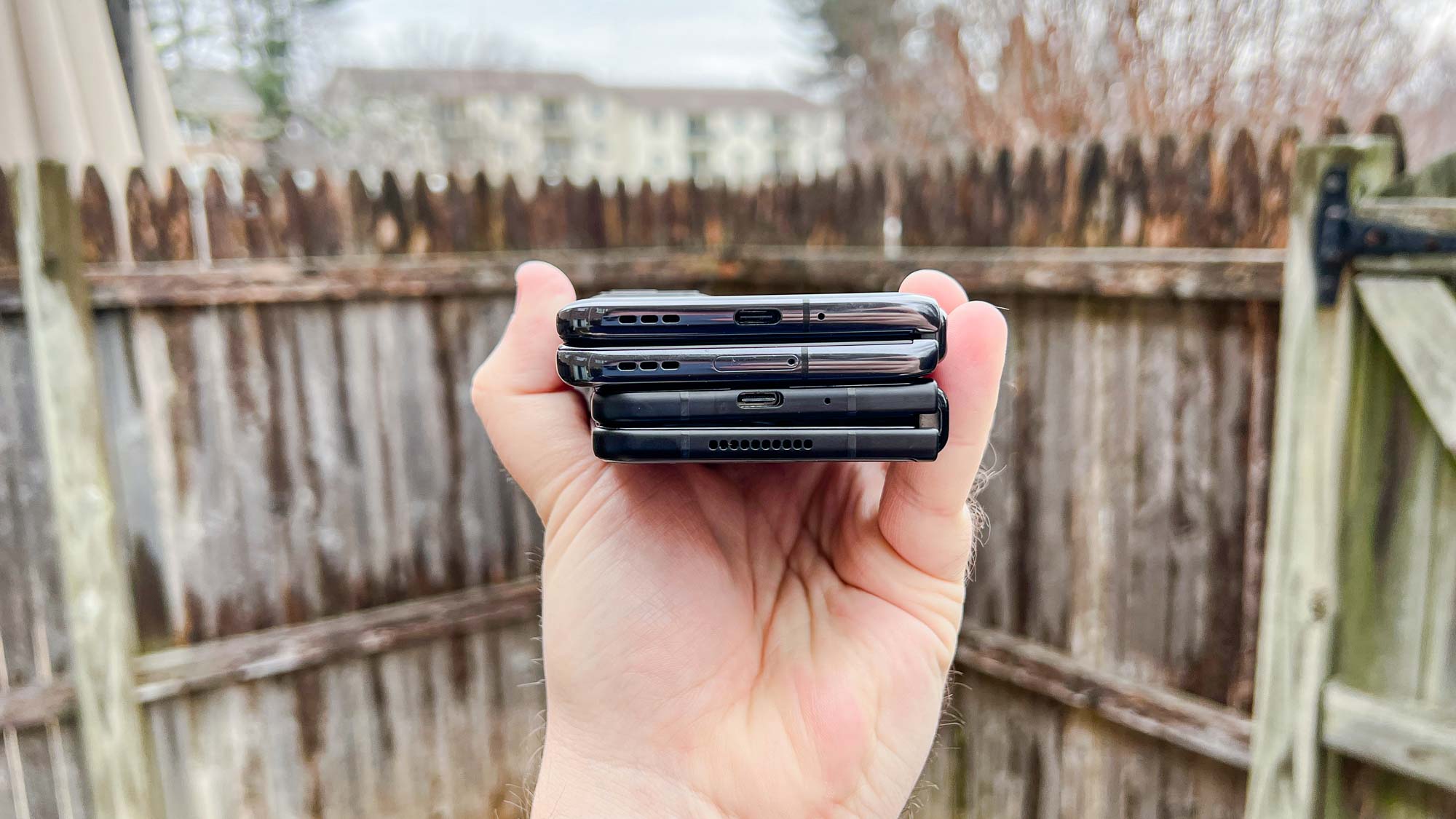
The Fold 3, conversely, not only has a gap when folded, but also a crease that you can feel when unfolded. After the Find N, you definitely notice these two aspects and the Fold 3 feels and looks inferior in comparison.
As for the phones themselves, the Galaxy Z Fold 3 is a tall device that bears the distinct Samsung design language. In contrast, the Find N is more diminutive, though from the back, it does look similar enough to Oppo’s traditional flagship, the Find X3 Pro.
The Fold 3 is IPX8-rated, meaning it can survive 1.5 meters of water for 30 minutes. It also sports a bunch of durability upgrades over its predecessor. The Find N lacks any ingress protection rating, meaning it’s quite dangerous to have the phone near water. Perhaps the a future version will sport some kind of water resistance.
Oppo Find N vs. Samsung Galaxy Z Fold 3: Displays
The Find N has a 7.1-inch (1920 x 1792) AMOLED internal display with a 120Hz refresh rate. On the outside, it features a 60Hz 5.9-inch (1972 x 988) AMOLED panel. While I wish the cover display was also 120Hz (once you go to high refresh rate, it’s hard to go back), 60Hz probably helps with battery life.
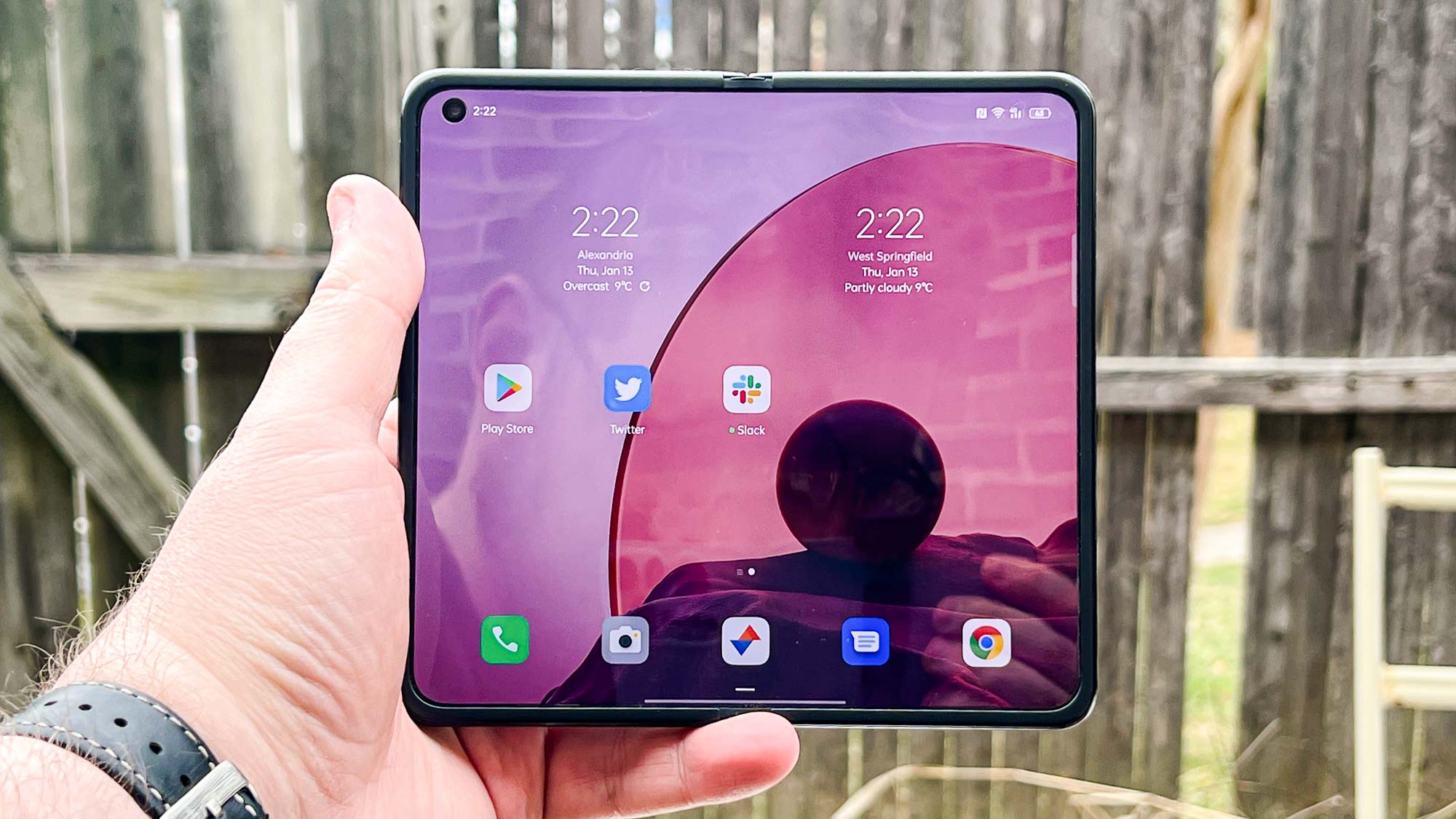
The Galaxy Z Fold 3 has a 7.6-inch (2208 x 1768) 120Hz internal display and a 6.2-inch (2268 x 832) 120Hz cover panel. In our testing, it managed 104.2% of the sRGB color spectrum and 76.9% of the more challenging DCI-P3 gamut. It received a Delta-E score of 0.26, where 0 is perfect. And we measured a max of 422 nits (312 nits on the cover display), which isn’t very bright at all.
We didn’t run the Find N through our usual suite of testing, but Oppo claims the internal display can reach a peak brightness of 1000 nits. It’s hard to accurately gauge that on personal use alone, but I had no trouble seeing the display out in direct sunlight.
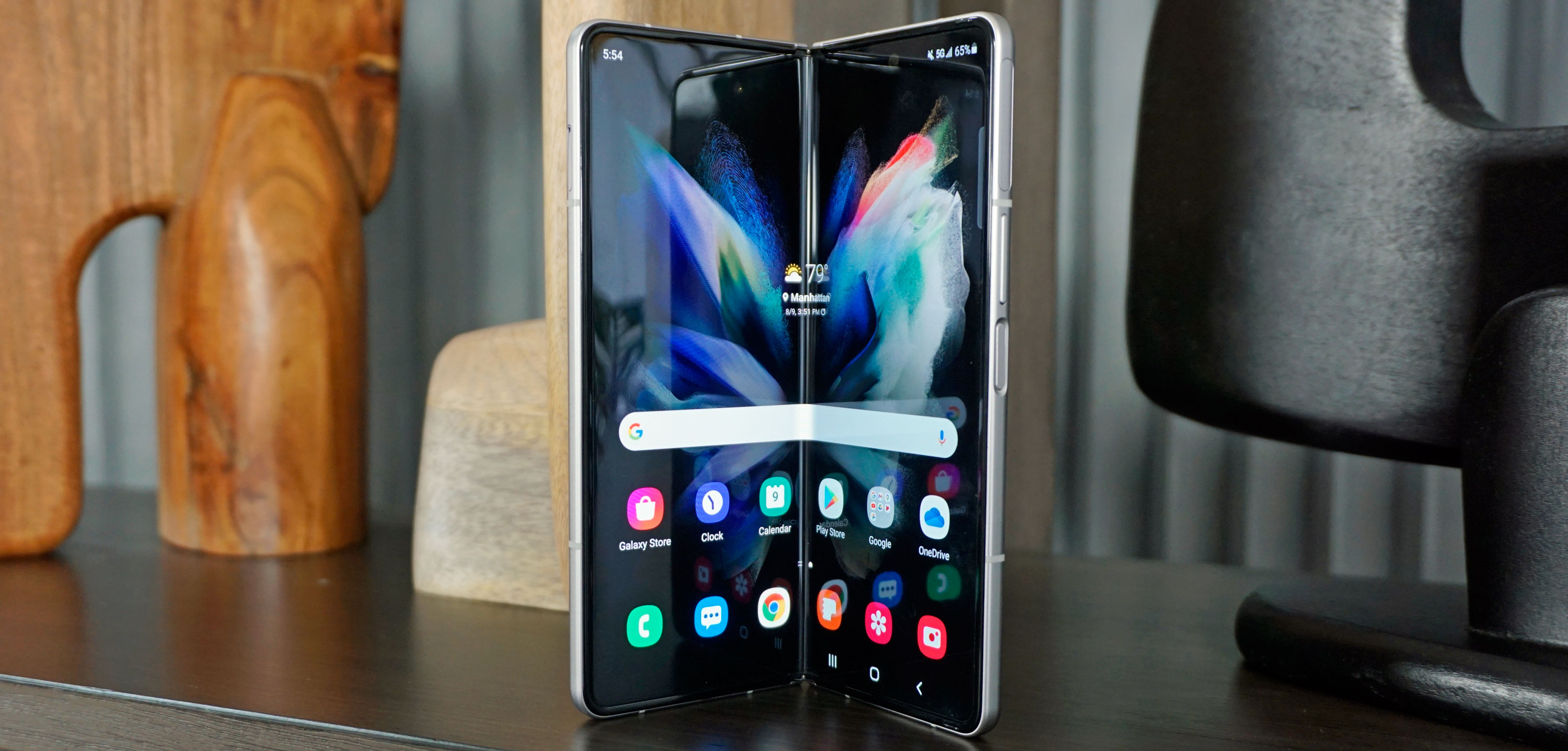
It’s hard to say which display I like better. The Find N’s certainly looks brighter to my eye, but I like the colors on the Fold 3’s Dynamic AMOLED panel. The FInd N is also easier to handle, so I experience less fatigue while using it long-term. Samsung’s display prowess is patently obvious here and I think content looks richer on it.
Oppo Find N vs. Samsung Galaxy Z Fold 3: Cameras
A triple rear camera setup is the name of the game with these phones. The Find N has a 50MP main camera, 16MP ultrawide, and a 13MP telephoto with 2x optical zoom. For selfies, it has 32MP cameras on the cover and internal displays.
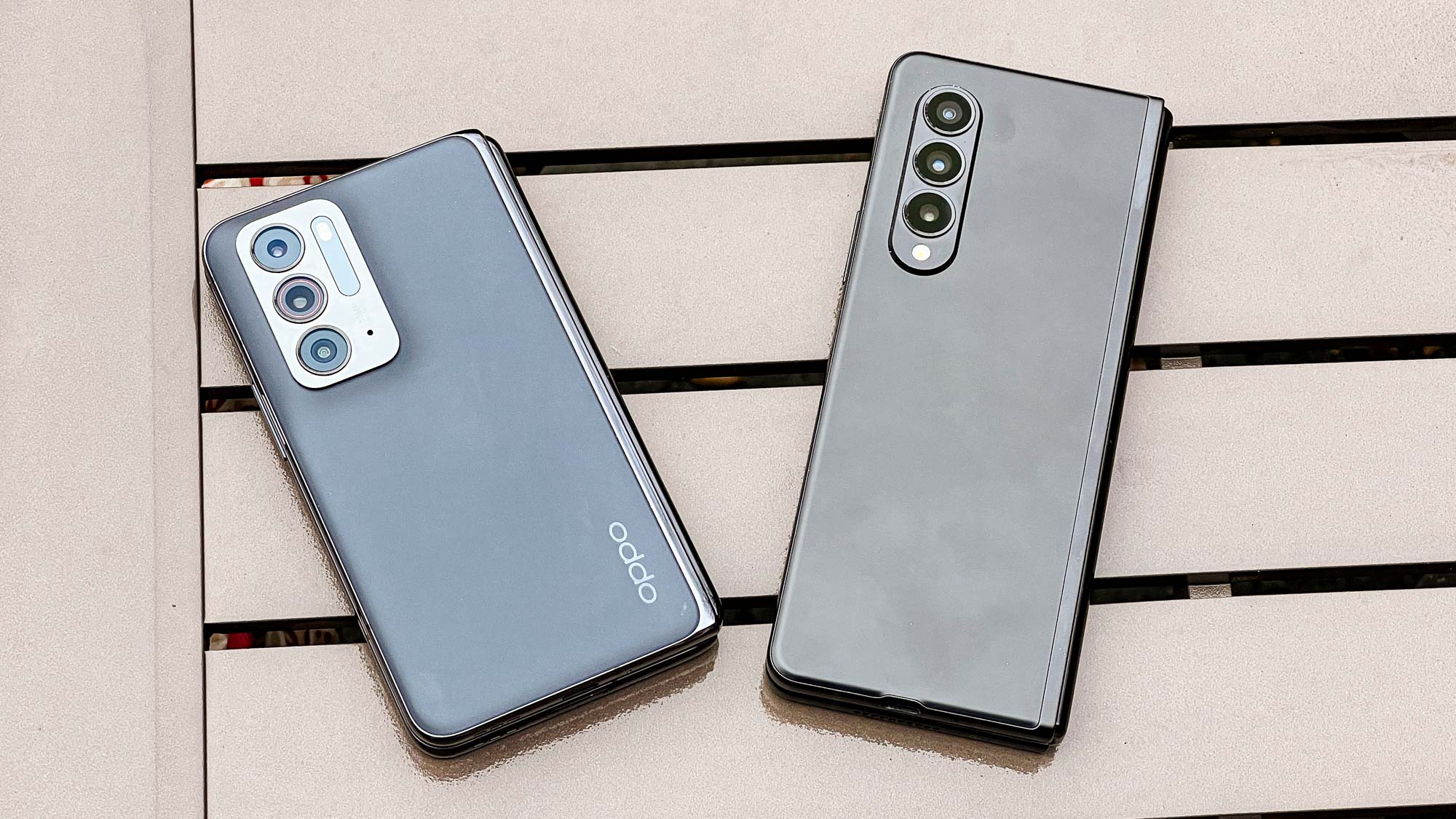
Meanwhile, the Galaxy Z Fold 3 has 12MP main, 12MP ultrawide, and 12MP telephoto (2x optical) cameras. On the cover, there's a 10MP shooter and then inside, you’ll find a 4MP under-display camera.
To kick off this foldable camera phone comparison, here is a shot of a sign in my neighborhood. The Find N captured a warmer photo. The red in the sign and the car behind it look pretty good, and even the bricks in the background look nice. The Galaxy Z Fold 3 went with a cooler image, much more true to life given the overcast conditions. Its reds and other colors look great, and I think I prefer it over the Oppo.
For the ultrawide camera comparison, Samsung managed a more natural-looking color profile than the Find N. The focus on the Oppo is much softer and the photo overall doesn’t look very detailed. It appears flat to me. The Fold 3 produced an image with much better depth and dynamic range. Focus is much sharper, all of which look great with the more accurate color reproduction.
For the telephoto images (2x optical on both), the story remains much the same. The Galaxy Z Fold 3 performed better with more natural colors, a stronger depth of field, and a cleaner picture. The Find N’s isn’t bad — it certainly has a better focus than the ultrawide — but Samsung wins here.
In this night shot of this Mass Effect helmet, the Galaxy Z Fold 3’s image is brighter and easier to make out. The Find N went with much warmer tones and a shorter exposure time, making for a dimmer, yellow photo. The focus is also way too soft, compared to the Fold 3’s sharpness. Samsung’s night mode has come a long way in recent years and it’s good to see the Fold 3 continue with it. Oppo, it seems, has a long road to travel if it wants to catch up.
In these selfies with the external front cameras, the Galaxy Z Fold 3 clearly wins. The image is brighter, crisper, and it’s just better to look at. It captures the blue of my eyes, making them almost brilliant. Meanwhile, the Find N’s shot is weaker and much dimmer. It had trouble with the lighting in my office (despite copious amounts of daylight pouring in). The Fold 3 also did a better job of capturing the details of my beard.
The internal selfie test is a different story because both the lenses used by both phones simply suck. The Galaxy Z Fold 3’s image is just bad. It’s blurry and fuzzy, lacking the dynamic range I’d expect from a phone that costs this much. It proves that under-display cameras just aren’t there yet. The Find N is hardly better, still struggling with the dimness issue as before. However, you can make out a lot more detail in my face and eyes than the Fold 3.
Oppo Find N vs. Samsung Galaxy Z Fold 3: Performance
Both phones use a Snapdragon 888 processor, which was the top chipset for Android phones in 2021 — the Snapdragon 8 Gen 1 is the follow-up and will power many of the 2022 flagships.

In practice, both phones feel practically identical in terms of performance. Apps open quickly and text scrolls smoothly, even on big webpages. Either device handles multi-app windows well, making for seamless transitions between whatever you happen to have open. The Fold 3 doesn’t even choke when three apps are open simultaneously.
The Find N and Galaxy Z Fold 3 are indistinguishable here. They have plenty of power for any task you need to complete. And both phones have tons of horsepower for games, even those that you play on the big internal displays. For example, in Geekbench 5, the Galaxy Z Fold 3 scored 3418 in multicore and 1107 in single-core. Meanwhile, the Find N managed 3644 and 986 in multicore and single-core, respectively. That’s not a difference you’re going to perceive in real-world use.
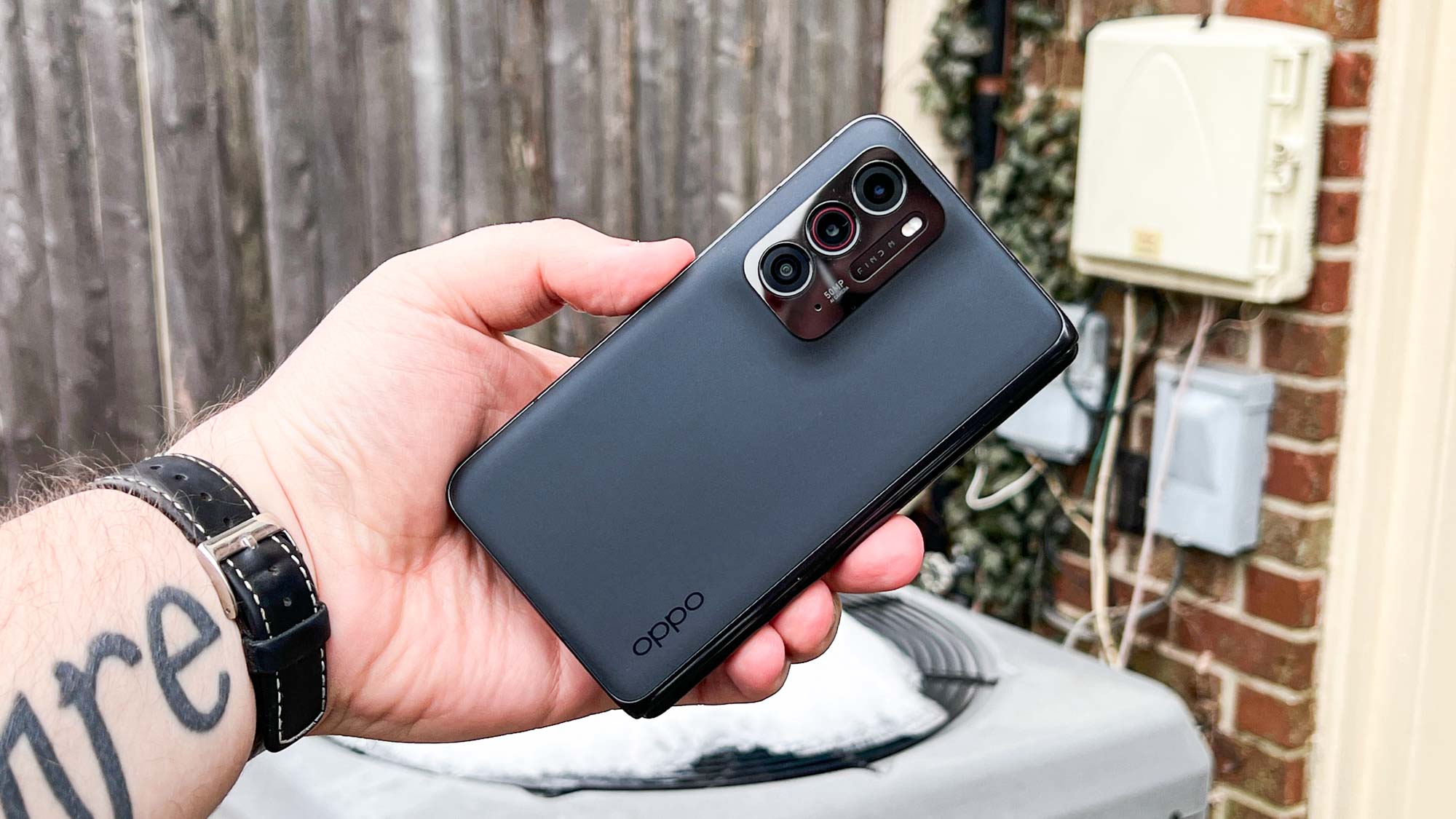
And in the 3DMark Wild Life Extreme gaming test, the Find N scored 1551 with an average fps of 9.3. The Galaxy Z Fold 3 scored 1432 with an average fps of 8.8. So the Find N wins ever so slightly in the benchmarks, even if the differences are indiscernible.
Oppo Find N vs. Samsung Galaxy Z Fold 3: Battery life
Battery life is a major sticking point for foldables, since none to date have figured out how to go the distance. I didn’t find either the Find N or the Galaxy Z Fold 3 to last that long, though Oppo’s device did seem to last a bit longer in my every day use.
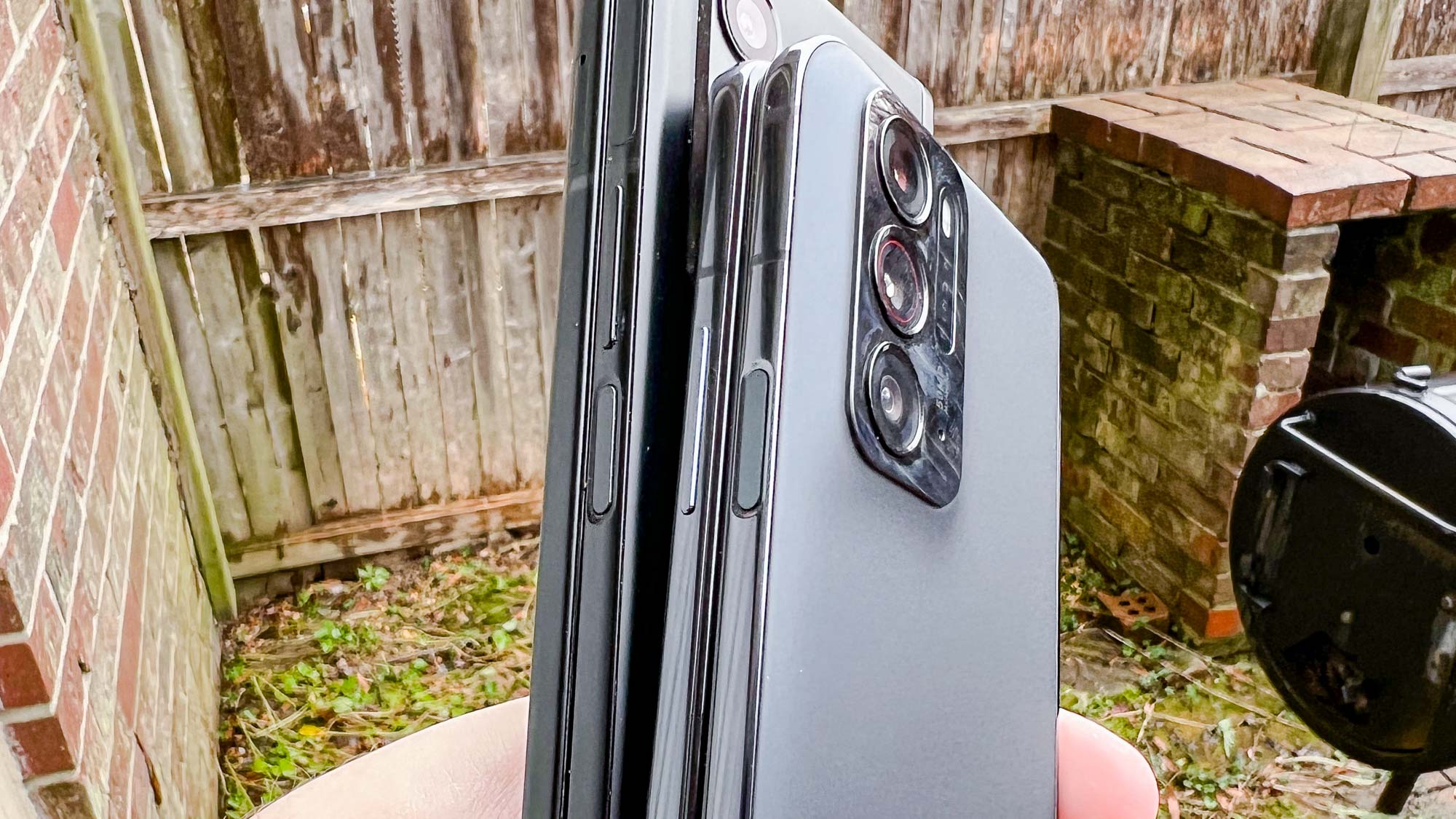
We don’t have battery life test numbers for the Find N, but the Galaxy Z Fold 3 lasted for 6 hours and 35 minutes in the Tom’s Guide battery life test. In this benchmark, we set the phone’s display to 150 nits and then task the device to endlessly reload web pages on a cellular connection. An average smartphone can hold out for a little less than 10 hours to put the Z Fold’s performance in context.
In terms of batteries, Oppo managed to fit a 4,500 mAh battery in the Find N, while Samsung went with a slightly smaller 4,400 mAh power pack.
Both phones struggle in this area, so let’s hope that the 2022 follow-ups eke out a bit more life from their batteries. The Find N sports 33W wired charging, while the Galaxy Z Fold 3 sits at 25W.
Oppo Find N vs. Samsung Galaxy Z Fold 3: Software and special features
Both phones do a great job with software, offering useful features to best take advantage of their larger, folding screens. Oppo includes a method to split apps between the Find N’s displays or create folding windows. Plus, there’s a dock on the Find N with basic shortcuts and recently used apps. The phone runs Oppo’s ColorOS 12 on top of Android 11.
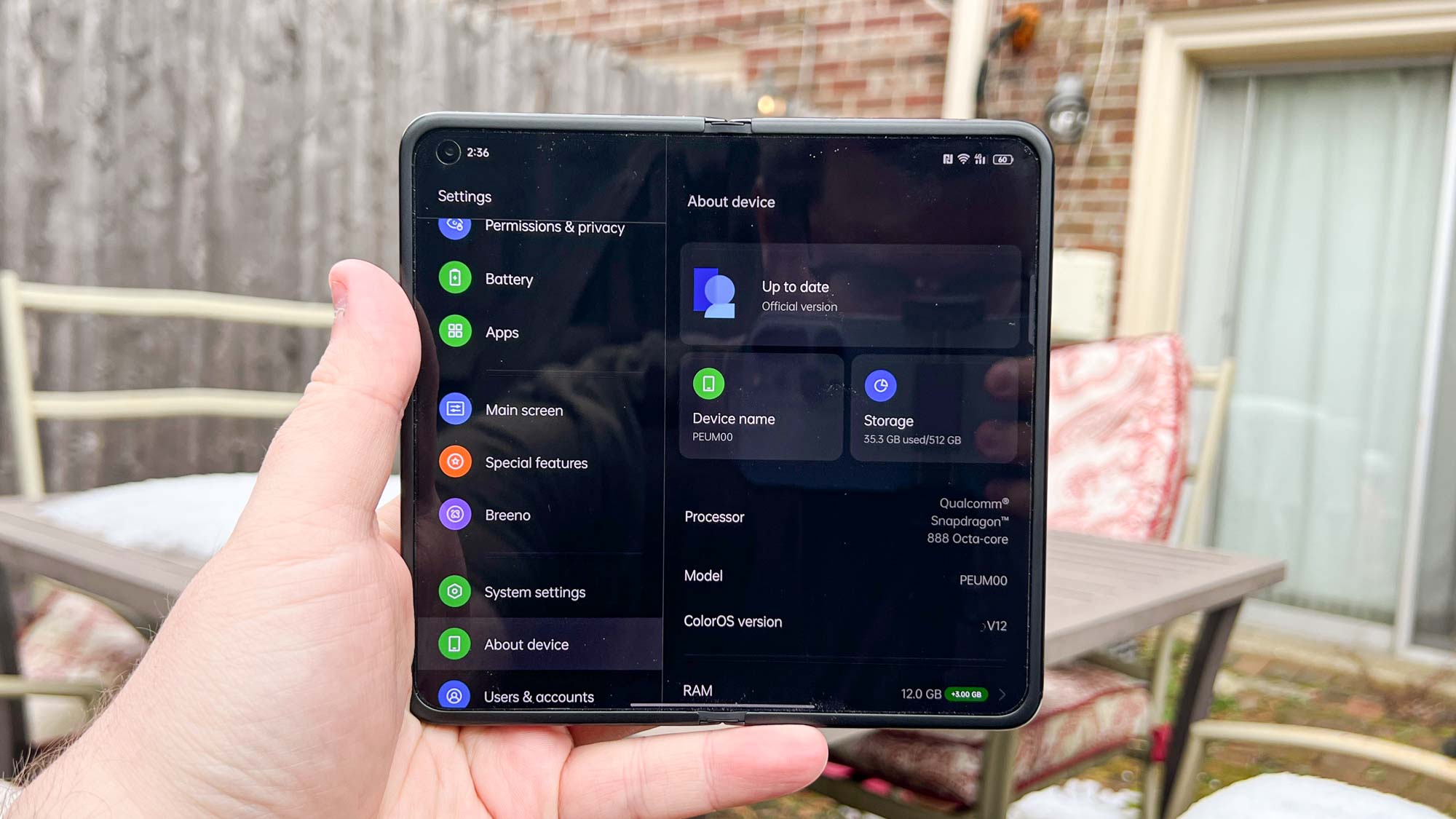
That said, Samsung definitely wins in this category. Not only do you get One UI 4 with Android 12, but the Galaxy Z Fold 3 includes a host of productivity features. There’s S Pen support, a taskbar, App Pair for setting up shortcuts to two apps simultaneously, drag and split content between apps/displays, and Flex mode.
The latter feature activates when you fold the Galaxy Z Fold 3 like a laptop. The phone then splits compatible apps between the displays, showing different content on either one. Two examples of this are YouTube and the camera app — in the latter’s case, you get the viewfinder on the top display and the shutter controls on the bottom.
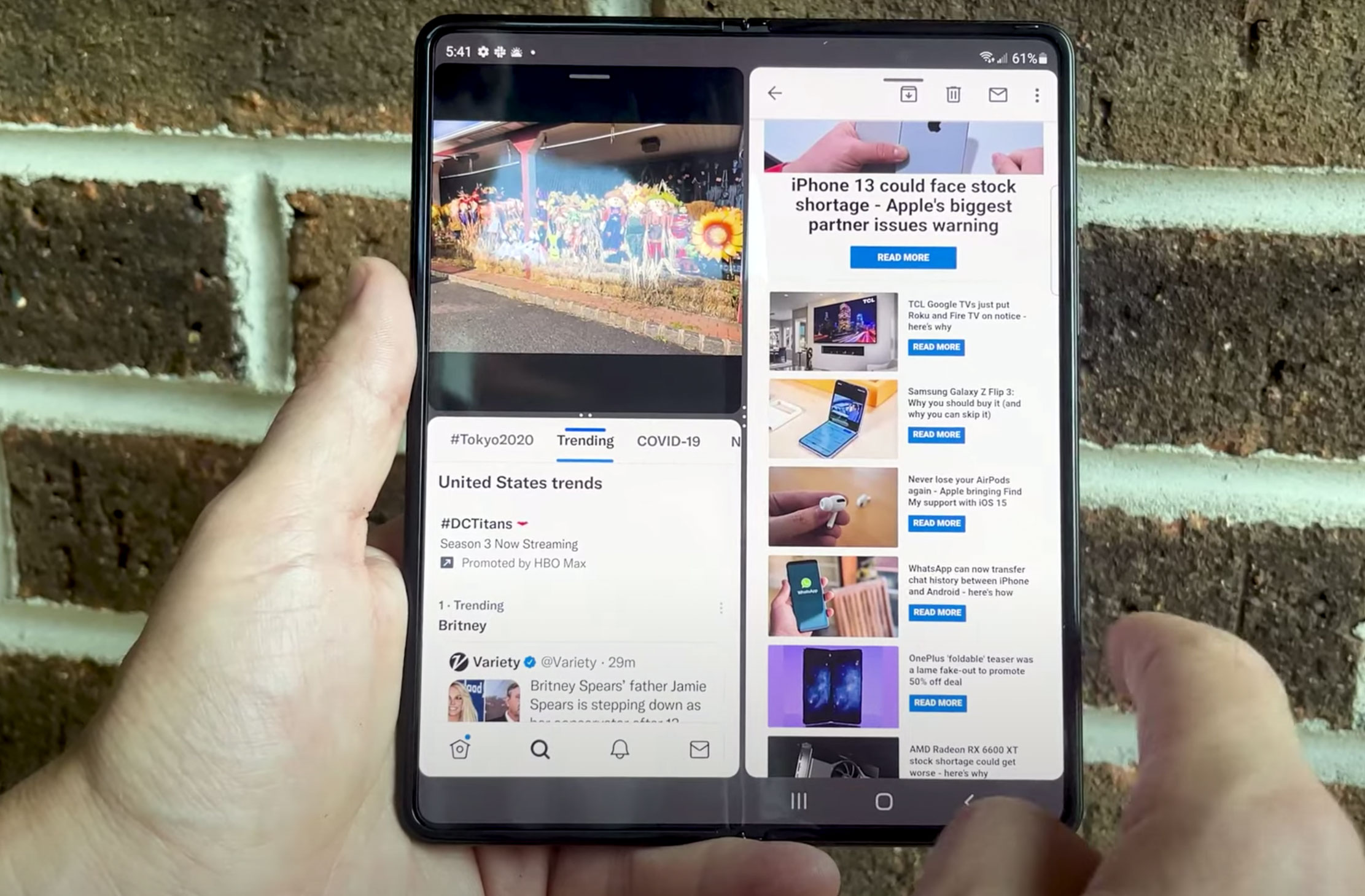
One caveat with the Find N’s software is that it’s a China-only build of ColorOS 12. It’s missing some core Android features, and it has Chinese replacements for some services like a voice assistant. The Play Store is hacked on, but it’s not a perfect solution. This all makes sense since the Find N wasn’t intended for international audiences, but it’s worth noting all the same.
Either phone does a great job with its tablet UI, though you might have to force the Find N to display everything in the full window instead of just phone-sized ones. Of course, this can mess with some things, notably video viewing and gameplay. It might be best to leave some apps in their 16:9 mode. The same goes for the Galaxy Z Fold 3.
Oppo Find N vs. Samsung Galaxy Z Fold 3: Outlook
Samsung could learn a few things from Oppo for the Galaxy Z Fold 4, notably on hinge design and the overall display ratio. The Galaxy Z Fold 3 feels and looks awkward to use in phone mode, while the Find N feels a bit more normal. Otherwise, the two phones here are mostly on equal footing.
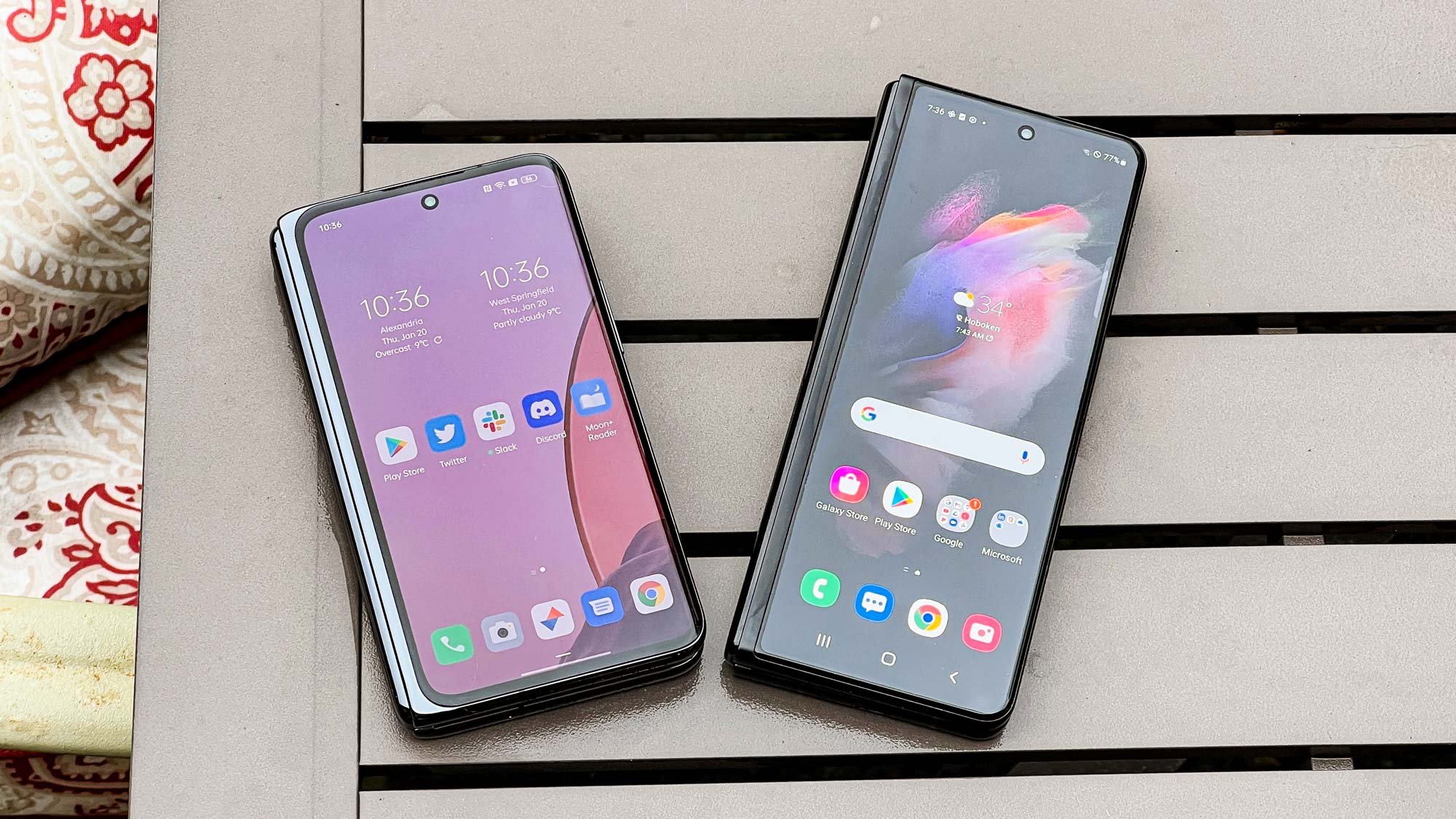
I say mostly, because cameras remain a big differentiating factor in any Oppo Find N vs. Samsung Galaxy Z Fold 3 comparison. Samsung clearly wins in every photo comparison, with the exception of shots taken with the phone’s disappointing under-display camera. I found the Find N’s poor performance surprising, considering how good the Find X3 Pro’s cameras are.
While many of us won’t ever get the chance to buy a Find N, we still hope Samsung sees just how closely Oppo’s phone compares to the Galaxy Z Fold 3. Samsung’s all-in on foldable phones, so any lessons it can learn from a formidable rival might be used to improve future releases.
Sign up to get the BEST of Tom's Guide direct to your inbox.
Get instant access to breaking news, the hottest reviews, great deals and helpful tips.

Jordan is the Phones Editor for Tom's Guide, covering all things phone-related. He's written about phones for over six years and plans to continue for a long while to come. He loves nothing more than relaxing in his home with a book, game, or his latest personal writing project. Jordan likes finding new things to dive into, from books and games to new mechanical keyboard switches and fun keycap sets. Outside of work, you can find him poring over open-source software and his studies.
